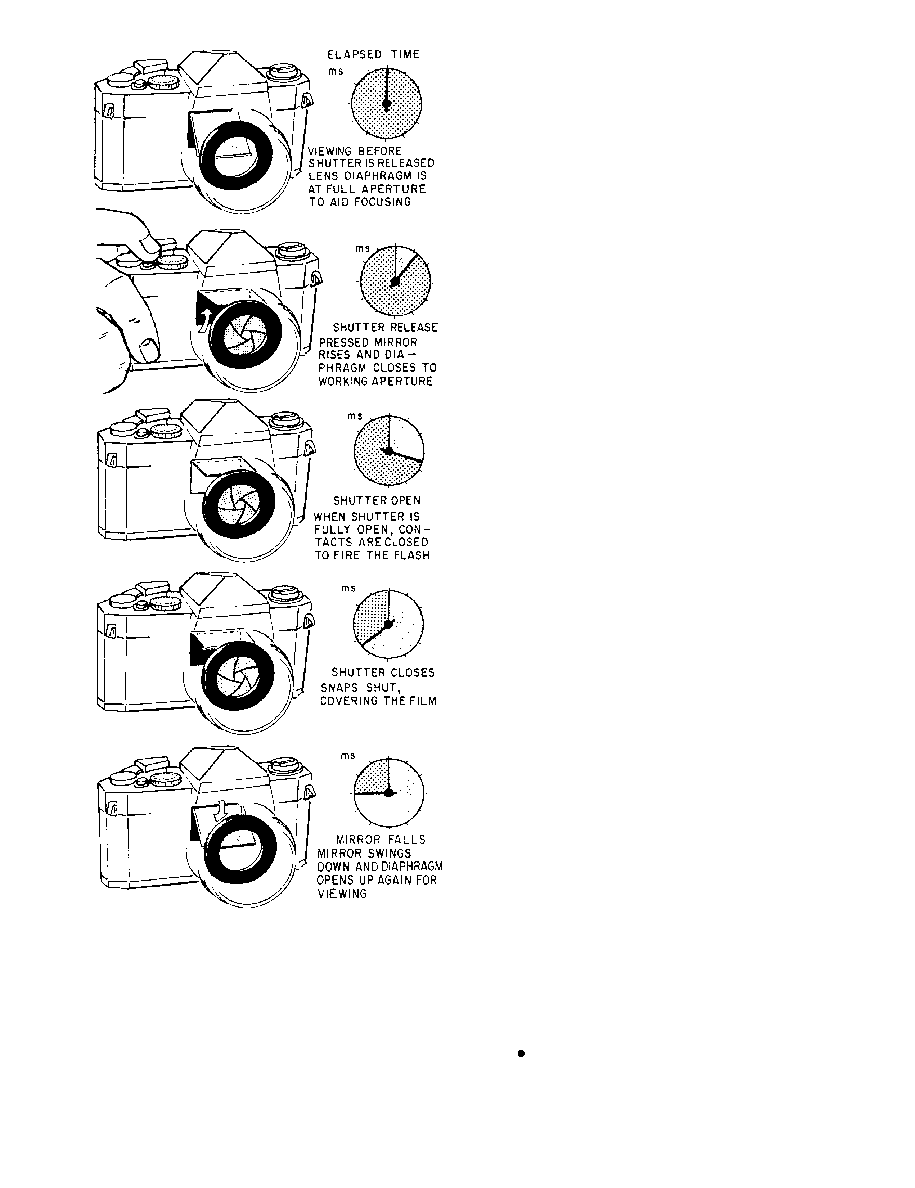
DOFMaster
for Windows
On-line
Depth of Field
Calculator
DOFMaster for Mobile Devices
On-line
Depth of Field
Table
Hyperfocal
Distance Chart
Articles
FAQ
Recommended
Books
Support
Contact
Links
Home
for Windows
On-line
Depth of Field
Calculator
DOFMaster for Mobile Devices
On-line
Depth of Field
Table
Hyperfocal
Distance Chart
Articles
FAQ
Recommended
Books
Support
Contact
Links
Home
As an Amazon Associate I earn from qualifying purchases.
![]()
mirror work together in a precise sequence that is
repeated each time the shutter is tripped (fig. 4-5).
preset working aperture at the instant the exposure is
bright, easy to see, and focus; but only controlled
brightness reaches the film for exposure.
barrel moves the lens closer or farther away from the
film as the focusing ring is turned. The interchangeable
lenses of most 35mm cameras are attached by a bayonet
flange. Each lens mount differs slightly for each
manufacturer of lenses and cameras, thus different
lenses and camera bodies cannot be interchanged.
the light falling on the mirror, the shutter curtain, the
focusing screen, or even on the film at the instant of
exposure. On an automatic camera, the f/stop or shutter
speed is adjusted automatically for correct exposures.
On manual cameras, the light meter produces a display
in the viewfinder to indicate the correct camera settings.
You must then set the camera controls to get the correct
exposures.
cameras are just as versatile as small-format cameras.
Interchangeable lenses, TTL metering, SLR focusing
systems, and both manual and automatic controls are
available on medium-format cameras. The advantage of
a medium-format camera is the larger negative size of
ETRS (fig. 4-6). This camera is available in almost all
when certain subjects are photographed to exact scale
or when large prints are required. Large-format cameras
produce negatives 4x5 or larger. The most common
large-format cameras are view cameras and copy
cameras. Features common to all large-format cameras
Basic Photography Course

As an Amazon Associate I earn from qualifying purchases.
WWW.DOFMASTER.COM
© 2006 Don Fleming. All rights reserved.
© 2006 Don Fleming. All rights reserved.